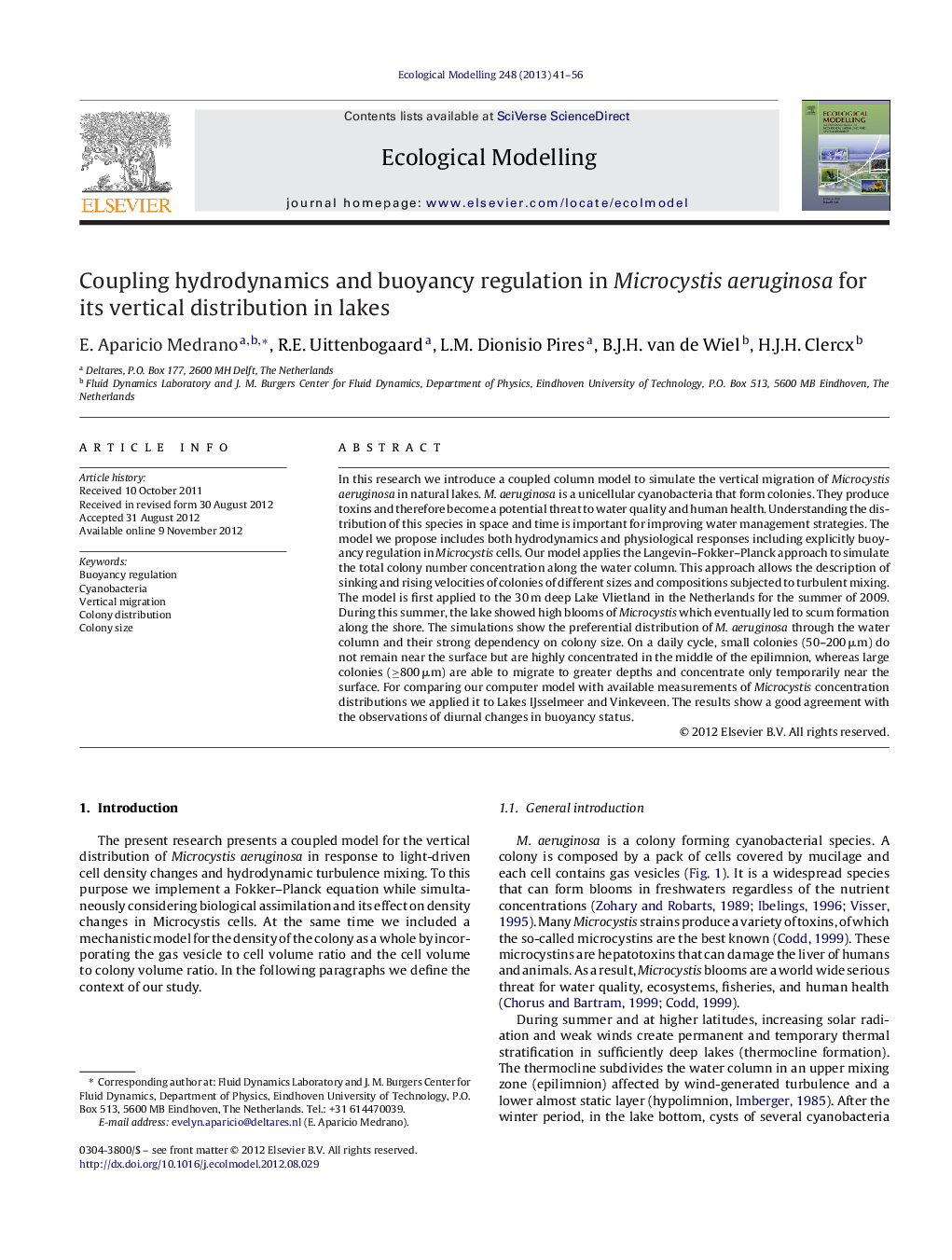| کد مقاله | کد نشریه | سال انتشار | مقاله انگلیسی | نسخه تمام متن |
|---|---|---|---|---|
| 4376352 | 1617497 | 2013 | 16 صفحه PDF | دانلود رایگان |

In this research we introduce a coupled column model to simulate the vertical migration of Microcystis aeruginosa in natural lakes. M. aeruginosa is a unicellular cyanobacteria that form colonies. They produce toxins and therefore become a potential threat to water quality and human health. Understanding the distribution of this species in space and time is important for improving water management strategies. The model we propose includes both hydrodynamics and physiological responses including explicitly buoyancy regulation in Microcystis cells. Our model applies the Langevin–Fokker–Planck approach to simulate the total colony number concentration along the water column. This approach allows the description of sinking and rising velocities of colonies of different sizes and compositions subjected to turbulent mixing. The model is first applied to the 30 m deep Lake Vlietland in the Netherlands for the summer of 2009. During this summer, the lake showed high blooms of Microcystis which eventually led to scum formation along the shore. The simulations show the preferential distribution of M. aeruginosa through the water column and their strong dependency on colony size. On a daily cycle, small colonies (50–200 μm) do not remain near the surface but are highly concentrated in the middle of the epilimnion, whereas large colonies (≥800 μm) are able to migrate to greater depths and concentrate only temporarily near the surface. For comparing our computer model with available measurements of Microcystis concentration distributions we applied it to Lakes IJsselmeer and Vinkeveen. The results show a good agreement with the observations of diurnal changes in buoyancy status.
► A model for the distribution of M. colonies over the water depth is presented.
► We apply the Langevin–Fokker–Planck equation.
► We combine a hydrodynamic and a rate of density change models.
► The model compares satisfactorily with available field observations.
► The distribution of colonies depends on wind speed and colony size.
Journal: Ecological Modelling - Volume 248, 10 January 2013, Pages 41–56